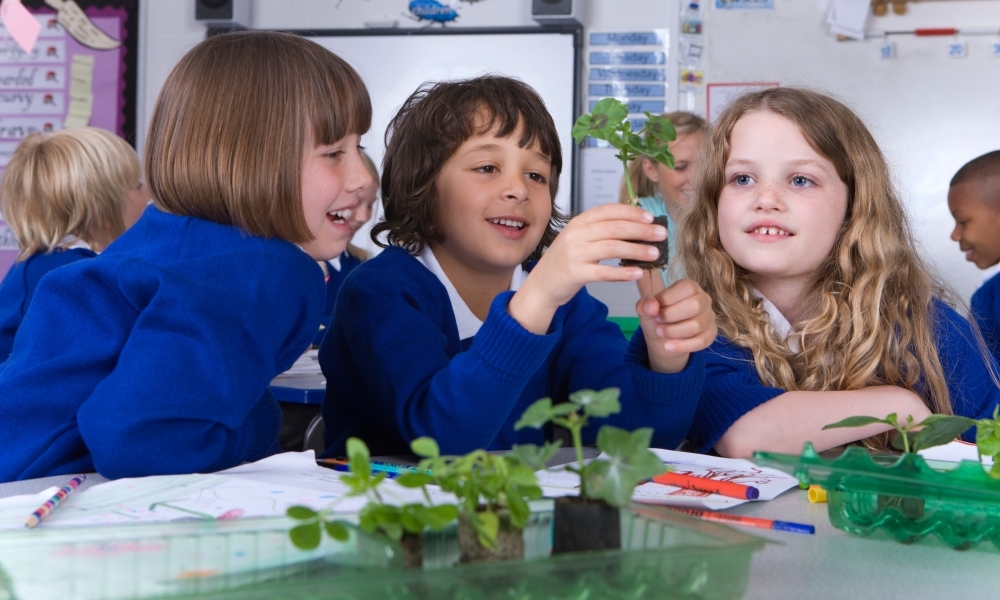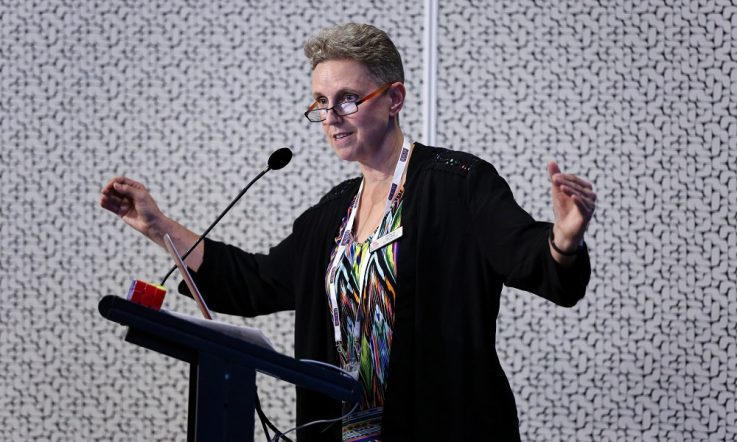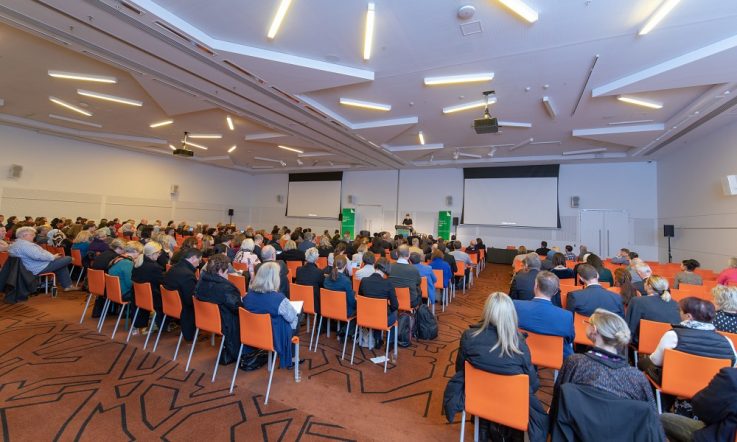This podcast from Teacher is supported by the Australian Volunteers Program. Are you interested in supporting communities overseas? Become a remote volunteer. Visit australianvolunteers.com to learn more.
Thanks for listening to this podcast special from Teacher magazine. I’m Rebecca Vukovic.
ACER’s Research Conference is back in 2021, after a COVID-19 pandemic pause last year. The fully online event kicks off in August, and runs from the 16th to the 20th. The 2021 theme is ‘Excellent progress for every student: What will it take?’ and will feature international researchers from a range of disciplines. One of the keynote speakers this year is Rich Lehrer, Professor Emeritus and Research Professor of Education at Vanderbilt University in Nashville, Tennessee. A former high school science teacher, Rich is a member of the National Academy of Education, a Fellow of the American Educational Research Association, and a recipient of the American Psychological Association’s Distinguished Contributions in Applications of Psychology to Education. Ahead of the event next month, I sat down with Rich to discuss his research that explores science and mathematics education for elementary school students in the US. He also gives listeners a taste of what he’ll be sharing at the conference and why he decided to name his keynote address ‘Accountable Assessment’. Let’s jump in.
Rebecca Vukovic: Professor Rich Lehrer, thanks for joining Teacher magazine.
Rich Lehrer: Thanks for having me.
RV: It’s great to sit down with you ahead of ACER’s Research Conference 2021, where you’ll be a keynote speaker at the online event. I know your keynote address is all about accountable assessment, and I have a few questions to ask you about that topic later in the episode. But for now, I’d to hear more about your research on children's mathematical and scientific reasoning in the context of schooling. Before we get into that though, could you start by giving listeners a brief overview of your professional background, and how you came to be in your current role at Vanderbilt University?
RL: It started a few decades ago, I was a high school Chemistry teacher and I was – well to date myself a bit – I was having students solve problems and as they solve problems I asked them to think aloud and talk and tell me about what they were thinking about and I put cassette tape recorders, the technology of the time, on desks. Then I would go home in evenings and listen to what they had to say, so it gave me some insight into what they were thinking, what they found challenging, what they found easy (which I often was surprised by). And so then I learned that some people actually had a profession like this so I took myself off to the local university and, as I was teaching, started to learn about how people thought about learning and instruction; and these were my first ever experiences with this, I had only taken classes in sciences until that point.
So eventually I was convinced to try to go get a PhD and did so in Educational Psychology, and at the time there was a very heavy emphasis on rigour in experiment so I also had quite a bit of experience in statistics. I went from there to the University of Wisconsin at Madison and the Department of Educational Psychology, I spent nearly two decades there and then I was invited to join the faculty at Vanderbilt University and I found that very compelling because there were a lot of people there that were interested in the same kinds of issues that I was interested in. So I’ve been there ever since, that’s another nearly 20 years now.
RV: Wow! Now I’d like to hear a little bit about your work on mathematical and scientific reasoning in the classroom. I understand that this research focuses on the design of learning environments and involves collaboration with teachers in local schools. Could you tell me a bit about this work?
RL: Sure. The essential question for me is ‘is it possible to think about re-envisioning mathematics and science education for children in ways that put them into contact with some of the ways in which people in these disciplines tend to generate and revise knowledge?’ Of course they’re not going to be like copies of mathematicians or scientists, but rather, can we engage them in fruitful kinds of approximations to how people in those disciplines think?
And I was also very interested in alternative routes to a mathematics education, centred in space and geometry and data, because these of course are very useful as you think about modelling in sciences and how to get a grip on natural systems often involve generating quantities and thinking about quantitative relationships. So what might be ‘children-versions’ of that enterprise?
So those were the driving questions and, of course, these are matters of development and development doesn’t occur in a vacuum, it has to be systematically supported. And so that meant that it was logical to work in partnership with teachers, because they would be the ones conducting instruction and orchestrating conversations with children. And so the work has always been collaborative, it’s always been centred on pathways of children’s development in concert with working with teachers as we try to understand children’s thinking and how to promote change in thinking and what might be some productive ways of going about doing this. So that’s essentially the enterprise I’ve been engaged in for a number of years now.
RV: And Rich you mentioned those driving questions and I was hoping you could dive in a little bit deeper and talk to me a little bit about the key aims of this research. What were you hoping to achieve?
RL: Well, one issue for me is – how do children’s ideas about quantity develop, especially ideas about measurement? And, what are the implications for measurement for other realms of mathematics, like how children learn and think about their fractions? And also the general idea of quantity and its role in science – so as we encourage students to get a grip on natural systems they can deploy some of the mathematical systems that they’ve been learning about as models of these systems. Of course there’s more to learning about science than mathematising it, but this was an important element of the kinds of questions that I would be asking.
So for example, if you think about a coordinate system as an intersection of two rulers, we develop these kinds of ideas with children in third and fifth grade and then we would pose some exploration of things in science like density of materials where they would kind of coordinate weight and volume, or plant growth, where they would coordinate change in height or relative bushiness of the plant over time, and the mathematical systems allowed them to see things that they otherwise couldn’t see just by looking at the natural world.
So I was trying to cultivate a kind of vision of natural systems by deploying ideas in mathematics as models of these systems. But as we did that, the mathematical investigations grew too because there were new kinds of quantities and new kinds of relationships to consider, so that would expand the realm of mathematics that we explored.
So essentially it was trying to set up, and I think successfully so, a synergy between mathematics and science education.
RV: I was hoping to just take a moment now Rich, just to run through some of the key facts about this research. So which age group or year group are involved? How many schools? When did you begin this research? Could you tell me a little bit more information?
RL: Sure, well it’s always centred in elementary grades with some work in 6th and 7th Grades (middle school here) but largely the idea was to … I started working very small with just a few teachers in one school and gradually that expanded to many teachers in four schools and then that expanded to teachers that weren’t in the state but were in other states, and so on.
So I’ve conducted this work in a variety of school settings, both close to home and at a distance. And of course, at a distance always presents some interesting and new kinds of challenges, both in work with teachers and in learning about students. So that work has always as I say, spanned elementary grades and some of the work that I did in statistical reasoning included middle school students, 6th and 7th Graders.
RV: Yep, fantastic. And as you mentioned Rich, you were trying to engage children in areas of mathematics that are critical to STEM education, especially the areas geometry, measurement, data and chance. I’m wondering if you could touch on now what it actually looks like in the classroom for a teacher doing this kind of work?
RL: Sure, well, so let’s take an example of data – when we first started working in data we found that teachers were collecting data but there really weren’t any questions in mind. So data was like an enterprise divorced from questions. So the first thing we did is say ‘hey what kinds of questions could we pose that children could be involved in the generation of data’ – so that they could understand ideas about data as constructed by measuring things and not as received in texts or just handed to them as lists of numbers.
Then, as children collected data to answer questions and very simple questions in early grades like: What kinds of things do we prefer for lunch? Well then, how do you go about asking questions like that of your peers? And if you have responses, how do you organise those responses? So these are issues about data organisation and structure. And then, well if you do those kinds of things, how might you create a visualisation of the data that tells somebody else what seems to be a pattern in the data?
And so we would involve children from the ground up – from questions to data collection to data organisation to data visualisation to inference about whatever the question happened to be. For example, in that 1st Grade class I’m thinking about they went off to the school cafeteria and argued for a change in the menu based upon the preferences expressed by the children in the school. And then there are some other issues of course that occur. So, if you have a set of responses – How representative is that? Who does it represent? Can you use it to predict what might happen again? And so on.
So from these very humble beginnings, we just kept building these ideas and we’d extend them to natural systems and take samples as we studied ecology and school playgrounds and so on. And so I’ve tried to give you a sense of its humble beginnings and consistent elaboration throughout the grades, because we were trying to take a developmental approach to the growth of these ideas and ways of understanding.
RV: And I’m interested in hearing more about student engagement. So what has been the response from students so far? And, have you found they’ve become more engaged in their mathematics lessons as a result of this work?
RL: Yes, well that was very noticeable to parents – students would come home when they would do things and they wouldn’t stop talking about mathematics and science and that was unusual behaviour at the time. And so that is, in fact, how teachers were essentially given permission to conduct these kinds of investigations, because there was a lot of support in the community. It eventually even got to the point where studies of ecology where the students were making presentations of their findings about some of the local systems to town engineers and other civic groups.
It really was an issue. One of the things they studied were retention ponds, because one of the places we were working was a prairie and they were developing new housing. Well if you develop new housing, what happens is you have more run off from storms and that run off, unless it’s regulated somehow, goes into rivers, and if it’s too high of a temperature, it decreases dissolved oxygen and you get fish kills. So the engineering response to this is to create retention ponds, but what the engineers forgot about is that these over time would become living ecologies. And so that’s what the students were studying and they were thinking about how to alter and have altered the water ground interface, native plantings and so on, and then trying to study what happened with water quality. So all of this was of a genuine interest to the town where they lived.
RV: We’ll be back after this quick message from our sponsor.
You’re listening to a podcast from Teacher magazine, supported by The Australian Volunteers Program. Did you know the Australian Volunteers Program is looking for teachers to support communities overseas? You can become a remote volunteer and help support positive change in developing countries. There are lots of education assignments now online. Visit australianvolunteers.com to find the right volunteer program assignment for you.
RV: I’d like to talk now a little bit about how the research is aligned with parallel efforts in science education, to introduce children to the signature practices of the sciences – particularly the areas of invention and models of natural systems. Could you tell me a little about this part of the research project?
RL: Sure. I think I alluded earlier to this idea of well, if we study growth we have this problem of: So, what does that mean? And what is it? And how do we characterise change over time? And so some of the mathematical tools that children develop about measure, about coordinate systems and so on, can be redeployed to study ideas about growth.
For example, children predicted that growth would be like a copy machine – it would be a linear expansion – and then as they started growing things and taking measures of height at particular days of growth, they discovered ‘oh wait a minute, the rates are changing over time’ and in fact, they have a characteristic form that looks like an ‘S’. So, from a professional point of view, someone would say ‘oh it’s just following a logistic function’ but of course, this was unknown to them, so it was a surprise.
And then they studied roots, and they had to invent ways of tracking root growth, and then there was another surprise – that as they looked at roots they grew faster than shoots, but they had the same kind of ‘S’ shape. And so this is kind of the flavour of the pursuit of representational re-descriptions of natural systems using conceptual tools at hand in mathematics, but also other things like developing capacities to engage in scientific drawings. Like, what you do when you’re a scientist and you draw? Why don’t we always just take photos? What are we trying to do with drawing? We’re trying to highlight and suppress, highlight features that we think are important and don’t worry about some of the others.
And so, we’re again trying to help children develop an understanding of the natural systems by engaging in some of the ways in which scientists approach understanding these systems.
RV: This is such a fascinating body of research, but I’m thinking about the teachers and school leaders listening to this episode today and I’m wondering, what are some of the key takeaways from this work that perhaps they could apply in their own school contexts?
RL: Well, one thing that I think is critical is that we look at children’s development and we try to identify core ideas and try to think about how to systematically support them throughout early schooling. And so, rather than lock ourselves in grade boxes, this argues for teachers and administrators working together school-wide – and perhaps with other schools – to think about how conditions of instruction might be arranged so that children have agency in developing mathematics and science.
It’s one thing to read something in a text, and there’s a great deal that one can learn from that and of course that’s a great thing, but that needs to be coupled with some practical experience in generating these systems for yourself, both in mathematics and in science. In mathematics, children ought to be given the liberty to pursue questions, just as we encourage them to do in science. So I think those are things that can be adapted to local circumstances.
RV: As I mentioned earlier Rich, you’ll be presenting at ACER’s Research Conference in August. The name of your keynote is Accountable Assessment – could you explain what ‘accountable assessment’ is exactly?
RL: Well, I kind of did that tongue-in-cheek in a way. In this country accountable assessment generally means students take a test at the end of the year that’s standardised and inferences are made about the quality of their learning and about the quality of their instruction from these single events. And, often, if you try to probe about ‘well, what is being tested?’ it’s very difficult to understand other than very vaguely ‘well it’s about mathematical domains’, ‘it’s about scientific realms’. But really, what is the image of growth and development of knowledge? And for the most part, I think if you push a little bit you find that there isn’t any. So I’ve been working with a colleague at Berkeley, Mark Wilson, who believes that measurement should be anchored to descriptions of student thinking and progress in student thinking.
So, one of the ways in which I think assessment should be accountable is that we ought to be able to say very clearly what it is that we’re measuring and how we understand student learning, and how the items that students are responding to relate to what we call ‘constructs’.
But, more importantly, there’s a great opportunity for this kind of teaching, it relies upon diagnosis of what students are thinking and capitalising on variability in student thinking. And so teachers can be a great resource for guiding instruction by understanding how their students are thinking, and the project that I’m engaged in, and will be talking about, is to make assessment accountable to students and teachers. So it’s not something done to them, but, rather, it’s part of something that is ongoing and that benefits them.
Then the critical issue with the collaboration with Mark Wilson (who will also be talking at the conference), is to say ‘well, can we take that information from the classroom which is denser and richer than you can get from a single shot assessment, and can we incorporate it into the same testing approach that governs us in [inaudible] assessment?’ And so what I’ll be talking about will be efforts for teachers to explore the feasibility of that enterprise.
RV: And so finally Rich, what do you hope delegates will walk away with after listening to your keynote? What are some of the practical strategies or insights you’ll be leaving them with?
RL: Well, hopefully they’ll begin to entertain the idea that assessment can be capitalised as part of their every day enterprise of teaching and learning; and that they can have a voice and a contribution to larger systems of assessment. And that, hopefully, we’re developing the technological means, the digital tools and the statistical models that can bring that vision to reality. Of course it will be a process of testing things out and the like but I think it’s way, way overdue, especially in this country [the US] – maybe it might be a little bit more enlightened in Australia. I can only hope.
RV: Professor Rich Lehrer, it’s been lovely chatting with you. You’ve certainly given listeners a lot to think about ahead of Research Conference next month. Thanks for sharing your insights with Teacher magazine.
RL: Thank you.
That’s all for today’s episode. If you loved this chat with Professor Lehrer and would like to listen to his keynote at Research Conference, please visit the Research Conference website for all the details on how to register for the event. Rich will only be one of the keynote speakers at the event – you can also hear from Professor Di Siemon from RMIT University, Professor Mark Wilson from the University of California, Berkeley, and the University of Melbourne, and from ACER’s very own Professor Geoff Masters. There’s a whole host of other speakers at the five-day online event. Check out researchconference.com.au for all the details. And of course, as always, be sure to subscribe to our podcast channel on Spotify, Apple podcasts or SoundCloud, so you can be notified of any new episodes. And, while you're there, we'd love for you to rate and review us in your podcast app.
You’ve been listening to a podcast from Teacher, supported by the Australian Volunteers Program. Are you interested in supporting communities overseas? Become a remote volunteer. Visit australianvolunteers.com to learn more.
Research Conference 2021 ‘Excellent progress for every student: What will it take?’ runs from 16-20 August, and features 20 sessions, four keynote addresses and one intensive Masterclass. Click on the link to explore the full program and register for the event.



